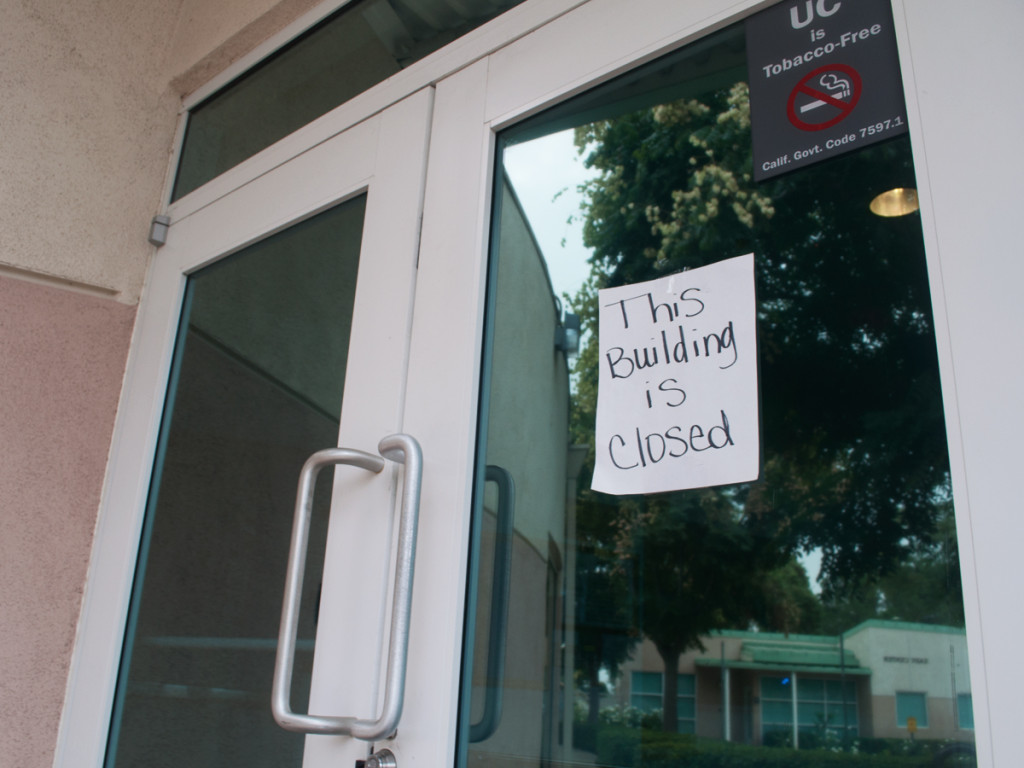
Child Development Center (CDC) Building A is expected to reopen its doors on Jan. 26 after being closed for more than three months due to mold infestation. Student parents have expressed concerns over the handling of the mold discovery, which required university officials to temporarily shut down a family community center last month to make space for a kindergarten classroom previously located in the moldy building.
The initial date was tentatively scheduled for Dec. 6, 2014 but was considered “overly ambitious” and extended to this month, according to UCR Director of Media Relations Kris Lovekin. The upcoming January date is contingent on whether Building A passes final inspections.
“The cleaning and reconstruction has been ongoing, which includes finding out how the moisture entered the building. Many items of furniture, toys (and) supplies must be cleaned or replaced,” Lovekin said.
Some student parents have expressed concerns over the university’s handling of the mold, which has led to a reduction of communal space and services formerly dedicated to families.
The discovery of the mold prompted the child care classes to be temporarily relocated from Building A to B with the exception of the kindergarten class, which is now being housed at the community center until the mold situation is dealt with.
Families learned of the community center’s temporary conversion after an altercation broke out between student parents and CDC staff during a movie night last month. There was miscommunication over the new use of the room, which parents were not given prior notice about.
University officials have since apologized and temporarily designated another space to remedy the situation. Located blocks away from its original counterpart, the temporary community center is currently taking up an existing unit in UCR Family Housing. Living right next door to the unit, Cristhian Loder says it receives very few visits and there is “hardly any noise” despite having initial concerns.
“At first, we were wondering about the noise (and) if there was going to be a lot of people because of the benches in the back, but we haven’t had any problems,” Loder said. “Sometimes I’d see a bunch of strollers strolling down the lawn.”
Another family housing resident, Betsy Kindblade, felt differently, expressing discontent over the new community space which she said is “half the size of our regular community center” and keeps another potential family waitlisted because the family housing unit is being occupied.
Elizabeth Casady, a fifth-year psychology undergraduate with four kids, lives right next to the original community center, which she felt was a “huge perk” for her family. Though it didn’t bother her to hear about the center’s temporary relocation, she is not a huge fan of the new space.
Compared to the original community center, Casady said the new unit makes it difficult for large gatherings to convene due to the lack of a conference-sized space. Casady also misses the old backyard, which provided a contained area for families to meet.
“(The old backyard is) fenced and private, so there’s no issue with neighbors and it turns into a park, that’s why we can do movie night. But if you set up something up like that (at the temporary community center), that’s someone’s backyard,” she said.
Lovekin explained that state laws about classroom time and space required a quick conversion.
“Taking over the community center isn’t ideal, but these are kindergarten students who need their first official year in school to be as complete and comfortable as possible,” Lovekin said.
The community center is expected to convert back to its initial recreational purposes of holding birthday parties, friendly gatherings and student organization meetings once Building A is reopened next week.
Casady is skeptical that the university will come through, believing that “most of the mold is ugly but it’s not actually dangerous. If it’s the toxic stuff, then they have companies that can specifically take care of it. If it’s taking this long (to deal with the mold), that’s a choice people are making, especially if it’s something urgent like that.”
The CDC also faces the challenge of transitioning into new leadership over the course of the 2014-15 academic year. At the time of the mold’s discovery, CDC Director Renee Jacobs had only been in her position for three weeks.
In addition, the 14 families who were initially displaced from the discovery of the mold will be invited to come back and the 28 student employees who were laid off may be asked to return pending demand for staff.
“This has been a high stress time, so building a sense of confidence and community will be important,” Lovekin expressed. “We are grateful for the patience of the families and the staff members during this time of transition.”
Director of Housing Services Andy Plumley says that an annual mold test will be conducted as part of CDC protocol to prevent mold from reoccurring. Housing Services is in charge of overseeing both the CDC and residences in family housing.








